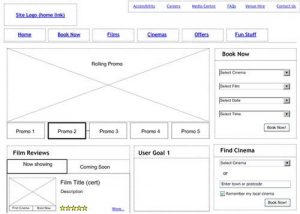
Photo by Daniel Salgado on Unsplash
There’s no argument that today’s workplace is in tremendous flux. The past 18 months have dramatically – and forever – altered the business landscape. Accelerated digitization. Support for work-from-home and hybrid configurations. Heightened attention to safety, mental health, and wellness. And this just scratches the surface.
Many scholars and futurists anticipate that we’ll soon see the consequences of all this in the form of what’s become commonly referred to as ‘the great resignation.” How ‘great’ the exodus of workers will actually be, depends upon whom you ask, the data they draw upon, and the comparisons being made. But what’s certain is that ‘great resignation’ or not, the events we’ve all shared over the past year and a half have sparked if nothing else a ‘great re-evaluation’.
The Individual Experience
People have endured extraordinary stress and trauma. Whether it was isolation and loneliness, missing significant life milestones, work disruptions, expanded childcare and educational responsibilities, severe illness, being unable to help others in need, or the loss of loved ones to COVID, we are all changed for the experience of this global pandemic.
These changes (perhaps along with the additional time we had for reflection) have inspired many to undergo their own re-evaluation of their lives and re-invent themselves. My son and daughter-in-law traded the Silicon Valley for a quieter life in the Midwest. A colleague who thought she’d never retire decided that she wasn’t going to ‘delay enjoying the fruits of her labor’ any longer. A friend who volunteered as a contract tracer found such joy in serving others that she transitioned from her corporate executive role to a less prestigious but more meaningful non-profit alternative.
Employees are re-thinking their lives. Where they want to live. How they want to work. What they want to do. Many are – for the first time – coming to terms with the reality of their mortality and their limited remaining cycles around the sun. They’re placing greater focus and importance on balance, family, fun, and contentment. And they’re prioritizing health and wellbeing over that hard-driving future focus that has characterized the approach of so many working professionals.
The Leadership Response
This re-evaluation offers an extraordinary – perhaps once-in-a-lifetime – opportunity for managers and leaders who are prepared to respond with both skill and humanity. Doing this boils down to cultivating two critical qualities: conversation and connection.
Cultivate Conversation
Conversation is a powerful leadership tool anytime; today it’s non-negotiable.
Getting a clear glimpse into the mindset of employees can only happen through dialogue.
It’s the only way to truly understand where they’re coming from, what their concerns are, and how their needs and priorities are shifting. Effective leaders are asking new questions:
- How are you doing – really?
- How have the past 18 months changed your relationship with work? With our organization?
- What’s most important to you today?
- How are your needs and expectations changing?
- What support do you need to remain engaged and employed with us?
These are courageous questions. And leaders must be prepared to hear honest answers. But isn’t it better to know? Because at least if you understand the employee’s mindset, you may be able to take steps to support their unique needs, bring more meaning to their work, find ways to better accommodate their broader lives, and perhaps retain their talents within the organization. The simple act of asking – and genuinely listening – speaks volumes to employees. And that kind of care can inspire greater engagement and retention in and of itself.
Cultivate Connections
The remote and fractured work experience of many employees has led to the loss of daily interactions, the weakening of loose personal ties, and fading of social networks.
The resulting sense of separateness doesn’t just fuel loneliness; it also makes it easier for employees to say ‘goodbye’ and take their talents elsewhere.
Leaders can interrupt this process by consciously engineering meaningful opportunities for human connection – even if it must happen virtually. Committing to regular one-on-one contact with employees is important. But nurturing relationships with colleagues and co-workers is equally vital. And beyond traditional team building activities, there are countless ways to embed greater connection into the work.
- Offer unstructured time during meetings for team members to informally share what’s going on.
- Acknowledge the importance of and challenges associated with connection by setting relevant performance expectations around employee relationships.
- Create a peer mentoring culture so employees are not just encouraged but are ‘deputized’ to offer support to each other.
- Strategically assign joint projects and group work to ensure ongoing connections and collaboration among team members.
Cultivating conversation and connections is a leadership best practice anytime. But right now, given the stress and trauma employees have endured and the competition for talent that’s heating up, offering support for people’s ‘great re-evaluation’ may also be the best way to minimize damage from the great (or hopefully not-so-great) resignation.
Business & Finance Articles on Business 2 Community
(20)






